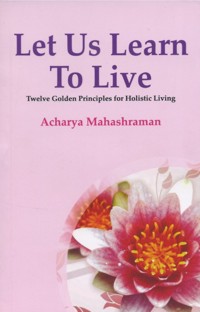A person's posture reflects his personality and state of mind.
Sitting erect and relaxed keeps one not only emotionally at ease but also energetic.Sitting properly is an art. Different situations call for different protocols of sitting. Sitting in meditation in an assembly during a religious discourse or in the presence of elders demands a certain decorum. Assuming the appropriate sitting posture in front of an audience involves etiquette and respect. Sitting becomes an art for those who are sensitive to the occasion.
When you adopt the wrong sitting posture you expose your physical weaknesses and indifference and even disrespect for the place or occasion. Inattention to what's going on, stretching the body, swinging the legs, making unnecessary gestures or displaying other signs of restlessness are some of the manifestations of plain rudeness and contempt. Some people spend their time just sitting idle, gossiping and backbiting or day-dreaming. They have no aim or goal, unlike those who sit quietly, or in contemplation.
People who are aware of their sitting posture are more inclined towards meritorious occupations. The type and locale of the activity depends upon the character of an individual and also the circumstances. For those with intellectual pursuits reading is a favorite activity. For those interested in religion, chanting is a productive and simple means of purifying the soul. When there is time to spare, one should close the eyes and chant in silence. People who spend hours in planes, trains and buses can utilize their travel time in chanting or reading.
Sitting In Meditation
Sitting erect and relaxed is the primary requisite of meditation. Some special postures such as the lotus, diamond or the simple cross-legged position are recommended but not mandatory. Basically any posture in which one can sit comfortably for a length of time is acceptable.
The diamond posture is considered beneficial for meditation as well as for general health. Sitting in this posture for a few minutes after every meal strengthens the digestive system. You should of course be relaxed and free from anxiety and aggression. Whenever you sit down be composed and smiling. There is a strong relation between physical stance and state of mind. The physical posture is the mirror of the inner or emotional world. The face reveals the emotions and the posture exposes the moods.
Sitting In Good Company
A person is judged by the company he keeps. The choice you make reflects of your temperament. The proverb, "Evil pursuits bring evil reputation" is full of meaning. Therefore, be cognizant of the character of the friends you choose. It is undoubtedly better to be alone than in bad company.
A couplet written in the Rajasthani language illustrates this concept:
"Gyani syun gyani mile, kare gyan ki bat. Moorakh syun moorakh mile, ke mukka ke lat."
"The wise go together by endowing the group with true knowledge, and the ignorant propel themselves into evil fist fights."
More precisely, the company of the wise will bestow you with a true understanding of reality whereas associating with the ignorant has the opposite effect. Sitting with saints and monks is valuable even if their teachings or talk is not always fully comprehensible. The time spent with them is very auspicious and is conducive to a moralistic lifestyle. In their noble presence, you can learn to cleanse the emotions, improve ability to tackle worldly problems, and resist unhealthy habits. Therefore, whenever such an opportunity arises avail it enthusiastically.
Sitting In Assembly
Sitting properly in an assembly is tantamount to being a good audience. A speaker can be thoroughly understood only when undivided attention is paid to him. The audience's interest energizes the speaker, whereas its indifference and inattention discourages him. A lively interaction between speaker and audience results in a constructive session. An interesting story illustrates this point:
Once a skillful craftsman carved three beautiful idols that looked exactly alike and showed them to a king. The king was so impressed that he offered to buy them. The craftsman requested the king to assess their value himself. The king estimated them to be worth $100 each. The craftsman replied, "Pardon me, your Highness! Your assessment is incorrect. Each idol has a different value." The king wondered why there should be a difference since all three idols were made of the same stone, were of the same size and weight, and had the same detailing.
The craftsman pointed to the first idol. He tried to insert a piece of straw into its ear but was not successful. "This idol's value is $50," he said. He tried the same with the second. The straw went into the idol's one ear and came out through the other. He assessed it at $100. Next, he thrust the piece of straw into the third statue's ear. This time it didn't come out; it had gone into the idol's stomach. He valued it at $1000. Complimenting him the king said, "Now I get your message."
The three idols are like three types of audiences. The first presents a deaf ear to the speaker. Such people can neither concentrate nor let others do so. The second idol represents people who listen but do not follow up on what they hear. Sermons slip away like drops of water on an oily pot. The third listens attentively, reflects on the message, and then tries to practice it.
There are many benefits to sitting and listening with concentration. A person who sits still and listens carefully to a good speaker can improve his language, speaking and problem solving skills.
You should sit in a place:
- where your presence does not disturb others
- where there are no distractions
- which is clean and pollution-free
- You should follow non-violence by ensuring the place to be devoid of tiny creatures and vegetation.
It should also be known that the physical energy in the body is stored in the tail of the spine. By sitting erect the energy has easy access to the brain. Hence assuming the proper sitting posture positively impacts the entire personality.
 Acharya Mahashraman
Acharya Mahashraman

